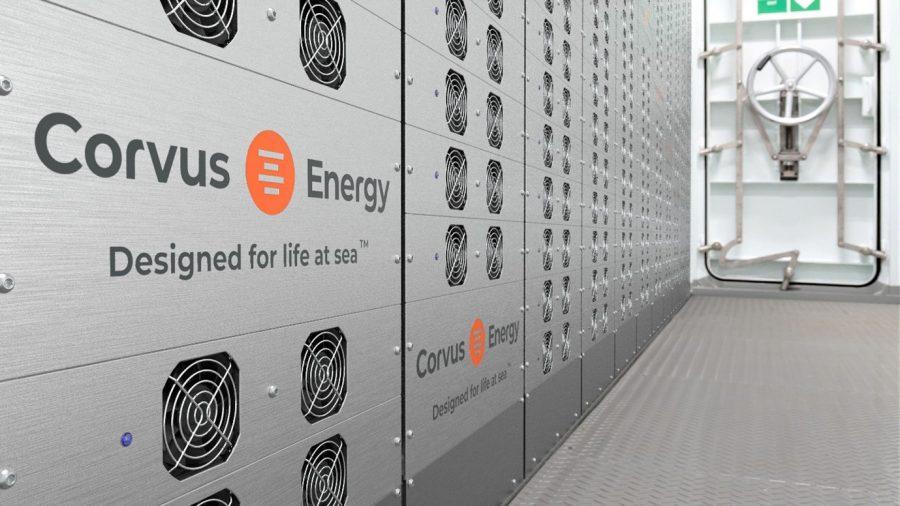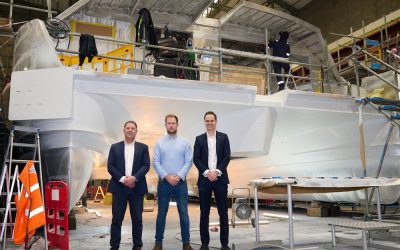130m-long vessel to be fitted with a 40MWh battery energy storage system that will power a series of electric propulsion system and waterjets
In a significant change to earlier plans, Australian shipyard Incat Tasmania has announced that the 130m lightweight inland ro-pax ordered by Uruguayan operator Buquebús, first announced in 2019 and already under construction, will now be powered entirely by batteries.
The order will now incorporate a Corvus energy storage system (ESS) of more than 40MWh, four times larger than previously used for maritime transportation. An integrated electrical system developed by Wärtsilä will use e-motors to power a waterjet propulsion system.
Presently unnamed, Incat Hull 096 will operate on a route along the River Plate between Argentina and Uruguay, a distance of approximately 45nm. The ferry will have capacity for 2,100 passengers and crew, 225 cars and a 2,000m2 duty-free shop.
The 40MWh ESS is made possible by the aluminium hull, which reduces the weight by as much as half compared to an equivalent steel vessel. An integrated electrical system developed by Wärtsilä will use e-motors to power a waterjet propulsion system.
Speaking at an online press briefing Robert Clifford, Incat’s chair and founder, praised his forward-thinking client for sharing his own company’s vision to be at the leading edge of low emission shipping.
He explains: “[The project] began its life some three years ago as a gas-powered vessel but was put on hold because of Covid. That gave us the opportunity to go along with the customer’s wishes to be particularly environmentally friendly. So at the client’s instigation we changed the specification to electric.”
Although SOLAS dictates that an ESS should be located in a dedicated battery room, the ro-pax will essentially have four separate battery rooms, each comprising an individual power train with a battery pack feeding a DC hub, with each of these in turn powering two electric motors that power either booster or steerable water jets (for a total of eight water jets). Controlling all of this will be Wärtsilä’s energy management system, with software that optimises the vessel’s operating profile.
Despite the significant scaling up in the ESS compared to any previous vessel – given that just a few years ago a 30-minute journey for a car ferry travelling at 12knots was considered an achievement – battery supplier Corvus Energy is amply prepared for the increase in demand, according to Halvard Hauso, the company’s chief commercial officer.
He comments: “We have seen the battery limit growing year by year and there is no size surprising us anymore. When this project came up we thought this was a big system but are already working on a 100MWh ship.
“We have factories in Vancouver, as well as Bellingham in the US and the facility in Bergen, Norway, which we are expanding to build the Dolphin Energy NextGen, which we are using for this project.”
The Dolphin NextGen, which adopts a stacking arrangement rather than the more typical battery rack, is based on nickel, manganese, cobalt (NMC) and uses cylindrical cells. Hauso notes that its C rating of 0.5 means it can charge with 20MWh of shore power, making it ample for such a large ESS.
With regard to the potential for further electrification of vessels Clifford and Hauso are both of the opinion that the only limitation is likely to be shoreside provisions. “With this sort of vessel you can easily cross the English Channel with zero emissions, the challenge is to get enough shore power at both sides to fill up the batteries,” says Hauso.
Clifford adds that he has been party to discussions regarding English Channel port infrastructure. “There is progress being made, it’s chicken and egg as to which comes first – the ship or the charging – but we’re making progress.”
The ro-pax is scheduled for delivery in 2025.







